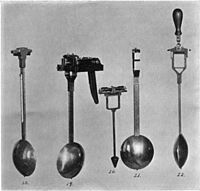Gravity gradiometry

Okay kiddo, imagine you have a ball and you throw it up in the air. What happens next? It comes back down to the ground, right? That's because there's something called gravity that's pulling it towards the ground.
Now, let's say you have two balls that are very close together. There's still gravity pulling them both down, but they're also pulling on each other. The amount of pull they have on each other depends on how close they are and how big they are.
Gravity gradiometry is basically a way to measure these tiny differences in the amount of gravity that different parts of the Earth have. Scientists use special instruments called gravity gradiometers to do this.
These instruments are very sensitive and can detect even the tiniest variations in the amount of gravity. By measuring these differences, scientists can learn about what's underneath the Earth's surface. For example, they can use gravity gradiometry to find out if there's oil or gas hidden underground.
So, to sum it up, gravity gradiometry is a way to measure the amount of gravity in different parts of the Earth to learn more about what's underneath the surface.
Now, let's say you have two balls that are very close together. There's still gravity pulling them both down, but they're also pulling on each other. The amount of pull they have on each other depends on how close they are and how big they are.
Gravity gradiometry is basically a way to measure these tiny differences in the amount of gravity that different parts of the Earth have. Scientists use special instruments called gravity gradiometers to do this.
These instruments are very sensitive and can detect even the tiniest variations in the amount of gravity. By measuring these differences, scientists can learn about what's underneath the Earth's surface. For example, they can use gravity gradiometry to find out if there's oil or gas hidden underground.
So, to sum it up, gravity gradiometry is a way to measure the amount of gravity in different parts of the Earth to learn more about what's underneath the surface.
Related topics others have asked about:
